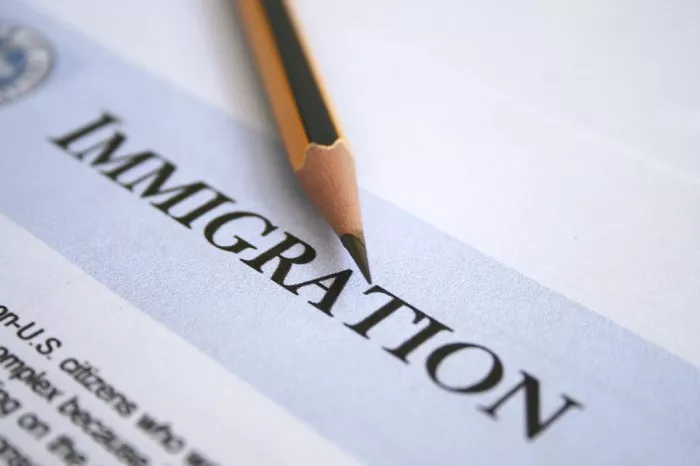In recent years, the landscape of immigration policy in the United States has undergone significant changes. One of the most impactful developments has been the introduction of a new asylum rule, which reshapes how migrants can seek refuge within the country. This comprehensive article explores the new asylum rule, its implications, and its place within the broader context of U.S. immigration law.
What is Asylum?
Asylum is a form of international protection offered to individuals fleeing persecution in their home countries due to race, religion, nationality, political opinion, or membership in a particular social group. It allows these individuals to remain legally in the United States and eventually apply for permanent residency and, later, citizenship.
Types of Immigration Related to Asylum
There are multiple immigration types in the U.S., including family-based, employment-based, and humanitarian immigration. Asylum falls under the humanitarian category, which also includes refugee resettlement and temporary protected status (TPS). Unlike refugees, asylum seekers apply for protection after arriving in the United States or at a port of entry.
Overview of the New Asylum Rule
The new asylum rule, introduced in 2023 and enforced into 2024, introduces stricter eligibility requirements and procedural changes for those seeking asylum in the United States. This rule was designed to manage the increasing number of migrants at the southern border and to streamline the adjudication process.
Key Provisions of the New Rule
- Presumption of Ineligibility: The new rule establishes a presumption that migrants who fail to seek protection in a transit country (such as Mexico) before arriving at the U.S. border are ineligible for asylum.
- CBP One App Requirement: Migrants must now schedule an appointment via the CBP One mobile app to present themselves at a port of entry legally. Failure to do so can disqualify them from applying for asylum.
- Faster Removal Proceedings: The rule allows for quicker deportation of those who do not meet the new procedural and eligibility criteria, effectively reducing the backlog in immigration courts.
Impact on Asylum Seekers
The new rule significantly impacts how asylum seekers navigate the U.S. immigration system. While intended to deter irregular migration and improve border management, the rule also poses challenges for legitimate asylum seekers who may face technological or logistical barriers in complying with the new procedures.
Increased Burden of Proof
Asylum seekers now bear a greater burden to prove they sought asylum in a third country and were denied before applying in the U.S. This requirement can be difficult for many, particularly those fleeing immediate danger or persecution.
Technological Barriers
The reliance on the CBP One app assumes access to smartphones and the internet—resources that many migrants lack. This digital divide creates an unequal playing field and may prevent vulnerable individuals from accessing protection.
Legal Challenges and Human Rights Concerns
The new rule has sparked numerous legal challenges and criticisms from human rights organizations. Critics argue that the rule undermines the right to seek asylum as guaranteed under both U.S. law and international treaties.
Potential Violations of International Law
International law, particularly the 1951 Refugee Convention and its 1967 Protocol, prohibits countries from penalizing refugees for illegal entry if they are fleeing persecution. The U.S., as a signatory, must align its policies accordingly. Critics argue that the new rule conflicts with these obligations by penalizing those who arrive irregularly.
Ongoing Court Battles
Several lawsuits have been filed challenging the legality of the new asylum rule. These cases may ultimately be decided by the U.S. Supreme Court, which will determine the rule’s future and its compliance with established immigration law.
Comparing the Old and New Asylum Systems
Under the previous system, individuals could request asylum at any point of entry or after arriving in the U.S., regardless of whether they had passed through other countries. The new system mandates appointments and applies a de facto “safe third country” rule, tightening the window for legitimate claims.
Streamlined vs. Restrictive
Proponents argue that the rule creates a more efficient system, reducing fraudulent claims and clearing backlogs. Detractors see it as overly restrictive, potentially endangering those with valid asylum claims by making the process harder to access.
Who is Exempt from the New Rule?
The rule includes some exceptions for vulnerable groups, such as unaccompanied minors, victims of severe trafficking, and those who face severe medical or humanitarian emergencies. However, these exemptions are narrow and strictly interpreted.
Future of U.S. Asylum Policy
As political administrations change, so too can immigration policies. The new asylum rule is subject to change by executive action or congressional legislation. Ongoing public and political debate ensures that asylum will remain a central issue in American immigration policy discussions.
Policy Recommendations and Reforms
Experts suggest a balanced approach that includes:
- Improving asylum processing infrastructure
- Investing in technology without creating barriers
- Respecting international obligations
- Creating regional solutions with transit and origin countries
How to Navigate the New Asylum Rule
For those seeking protection, understanding the new rules is crucial. Legal assistance is highly recommended, as immigration attorneys can help navigate the complex procedural and evidentiary requirements.
Meeting Immigration Requirements
Applicants must be prepared to show compliance with the new immigration requirements, including documentation of any prior asylum claims in transit countries, proof of persecution, and evidence of appointments scheduled via CBP One.
Conclusion
The 2025 new asylum rule marks a significant shift in how the United States handles asylum claims at its borders. While it aims to address system inefficiencies and reduce abuse, it also raises serious questions about accessibility, fairness, and legality. As legal challenges continue and the political landscape evolves, the future of asylum in the U.S. remains uncertain. For those impacted, staying informed and seeking legal support is more important than ever.
Related topics:
- How Long Can You Stay on a Student Visa?
- How Can I Get Permanent Residency in Norway After Studying?
- Why Do Large Numbers of People Migrate from Some Countries?


